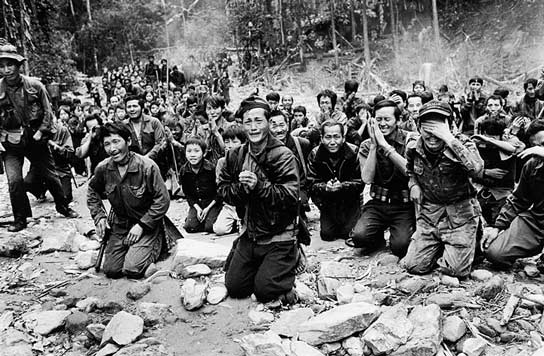Night Terrors


The Hmong Refugee Night Terror Phenomenon
By: Tan Sri Son | 23/08/2025
The Hmong Refugee Night Terror Phenomenon: A Medical and Cultural Mystery
In the late 1970s and 1980s, a series of mysterious deaths struck the Hmong refugee community in the United States, baffling doctors, anthropologists, and policymakers alike. These deaths, occurring mostly during sleep, became known as Sudden Unexplained Nocturnal Death Syndrome (SUNDS), and were later connected to the phenomenon of night terrors and cultural beliefs surrounding malevolent spirits. For the Hmong people—an ethnic minority group from Laos, many of whom fled the horrors of the Vietnam War and resettled in America—the sudden deaths carried both medical and spiritual significance. To this day, the Hmong night terror phenomenon remains one of the most chilling examples of how culture, trauma, and biology can intertwine in ways science cannot easily explain.
Historical Context: The Hmong Journey to America
The Hmong people lived for centuries in the highlands of Laos, Vietnam, and southern China. During the Vietnam War, many Hmong men were recruited by the CIA into the so-called “Secret Army”, assisting U.S. forces with intelligence, supply routes, and combat against communist forces. When the war ended in 1975, and the communists took power in Laos, the Hmong were targeted for retribution. Thousands were executed, while many more fled through the jungles into Thailand, eventually ending up in refugee camps.
By the late 1970s, tens of thousands of Hmong refugees had resettled in the United States, particularly in states like California, Minnesota, and Wisconsin. The move was not only geographical but also cultural—suddenly, a people accustomed to agrarian village life were thrust into urban American society, facing profound dislocation, poverty, and trauma. It was within this vulnerable community that the night terror deaths first emerged.
The Mysterious Deaths
Between 1977 and 1981, more than 100 healthy young Hmong men—mostly in their twenties and thirties—died suddenly in their sleep in the United States. The victims had no clear medical conditions. They would retire to bed seemingly well, only to be found lifeless the next morning, often with expressions of fear or signs of physical struggle. Autopsies revealed no definitive cause of death.
The U.S. Centers for Disease Control (CDC) eventually categorized the phenomenon as Sudden Unexplained Nocturnal Death Syndrome (SUNDS), a condition also seen in Southeast Asia, where it was known by names like Bangungut in the Philippines and Lai Tai in Thailand. However, the unusually high incidence among Hmong refugees in America raised urgent questions.
The Role of Night Terrors and Cultural Beliefs
Within Hmong culture, these deaths were not explained by medical science but by the spiritual world. The Hmong believed in a malevolent nighttime spirit known as “dab tsog”, a demon who presses on the chest of its victim during sleep, suffocating them and stealing their life force. In Western terms, this resembles the phenomenon of sleep paralysis, where individuals wake up unable to move, often experiencing hallucinations of a dark presence pressing down on them.
For Hmong refugees, already traumatized by war, exile, and cultural loss, the experience of dab tsog was particularly terrifying. Some survivors reported waking in the night, unable to move, with a crushing weight on their chest and the sensation of being strangled. A number of victims who later died had previously described such night terrors to their families, linking the deaths to supernatural attacks.
Scientific Explanations
Medical researchers explored several possible explanations for the deaths:
1. Genetic Susceptibility – Later studies suggested a connection to a genetic heart condition, Brugada syndrome, which predisposes certain populations, particularly Southeast Asians, to sudden fatal arrhythmias during sleep.
2. Stress and Trauma – The Hmong refugees had experienced extreme trauma, dislocation, and cultural upheaval. Psychologists suggested that the combination of PTSD, anxiety, and alienation might have contributed to fatal physiological responses during sleep.
3. Sleep Paralysis and Panic – Some researchers believed that intense fear during sleep paralysis episodes could trigger lethal arrhythmias in genetically susceptible individuals.
Ultimately, no single explanation fully accounted for the phenomenon. The interplay of biological vulnerability, psychological trauma, and cultural belief in dab tsog created a deadly combination that medicine alone struggled to explain.
Cultural Impact and Legacy
The Hmong refugee deaths became a focal point of discussion in both medical and anthropological circles. For the Hmong community, they validated the power of traditional beliefs and the reality of spiritual warfare. For American doctors, they highlighted the importance of understanding cultural frameworks when treating immigrant populations.
The phenomenon also entered popular culture. The idea of being killed in one’s sleep by a nightmare inspired Wes Craven’s 1984 horror film A Nightmare on Elm Street, where the villain Freddy Krueger stalks victims in their dreams. While fictionalized, the film was directly influenced by news reports of the Hmong deaths.
Conclusion
The Hmong refugee night terror phenomenon remains one of the most haunting examples of how cultural beliefs, migration trauma, and biological predisposition can converge into a medical mystery. It highlights the importance of cultural sensitivity in medicine and raises enduring questions about the connection between the mind, body, and spirit. For the Hmong, the deaths of young men in their prime were not just medical tragedies but spiritual battles, reminders of the fragility of life in a world disrupted by war and exile.
Even today, the case of SUNDS among the Hmong stands as a sobering lesson: that healing cannot be achieved through science alone, but must also consider the deep cultural and psychological landscapes that shape human existence.
Coming Soon
We're on a mission .........................

Discover our full library of The Theos e-magazines and articles — all completely free to read.
We are a crowdfunded publication, dedicated to sharing knowledge, reflection, and theology with readers around the world.
Your support and donations help us continue offering open, accessible content for everyone, everywhere.
Join us in keeping wisdom free.
@ the theos since 2023 © 2023. All rights reserved.